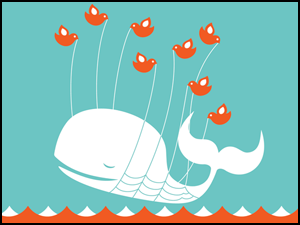 I’ve been reading Word of Mouth Marketing by Andy Sernovitz and it has some great insights. (Book report coming soon!) In one section of the book he mentions Harley Davidson, Apple and Nikon as brands that have a rabid fan base via word of mouth. These are brands that we’ve all heard of and when I thought about it, with the exception of Nikon, all are noted as a complete pain in the ass to work with.
I’ve been reading Word of Mouth Marketing by Andy Sernovitz and it has some great insights. (Book report coming soon!) In one section of the book he mentions Harley Davidson, Apple and Nikon as brands that have a rabid fan base via word of mouth. These are brands that we’ve all heard of and when I thought about it, with the exception of Nikon, all are noted as a complete pain in the ass to work with.
Let’s start with Harley Davidson. The joke I’ve always heard is that you have to be a licensed mechanic to own one. It breaks down so much you’ll be fixing it on the side of the highway more than you care to. The brand carries with it the counter culture moniker; now the aging counter culture if there is such a thing and I personally don’t own one and my Uncle had one and spent many days trying to fix it.
As for Apple, for years Apple users have suffered with not being able to get same software for their OS as PC users. Also, last year I was in a Geek Squad store, and saw many Macs on the rack. I asked the self proclaimed Geek if it that was rare to have so many Macs and he told me that it wasn’t and they repaired many of them. Maybe PC owners just throw theirs away and Mac owners see them as an extension of themselves but many of them looked new.
Both of these brands have similarities. They are unofficially the underdog (Apple is losing this status) and are counter culture on some level. The other part of their brand that seems to feed the loyalty is the challenge it takes to own one. It is work to own one. The same thing was true of Twitter in the early days.
TechCrunch would blog about Twitter being down (again). It was as if they could see the potential of the service and having it down added to the romance surrounding Twitter. Tech people love to complain about the shortcomings of their favorite applications. This type of conversation added to Twitters brand depth and shows the real struggle that businesses experiences.
Of course I am in no way suggesting you inject issues into your product/service in the hopes that it will attract loyalists that want you to succeed. Of course if you are suffering issues today, it is best to be transparent about them. All in all it comes down to a sense of authenticity. Is your product/service authentic with respect to your brand promise?
A recent report in the Journal of Consumer Research entitled When Consumers Search for Authenticity: In the Eye of the Beholder?, sites three “primary identity goals”: a desire for control, connection, or virtue. In other words, products or services that provide these are seen as authentic. For Harley owners, it’s easy to see a connection with feeling in control. You the bike and the open road. For Apple, it could be the sense of connection to the Apple community and potentially virtue. “I’m not a part of the Microsoft machine. I work for the good guy.” (Trying to tell an Apple fan that Steve Jobs is anything other than angelic, could get you punched in the mouth. It wouldn’t really hurt though.)
The question is of course, how do I build a product/service that helps create a loyal fan base, including any of my short comings? It’s not as hard as you’d think. You need to deliver on what your brand promise is. Apple never said it was going to be easy to find software for their machines. (They did say it would be stupid simple to use one.) Harley never said they would be reliable. They said that you’d be free on their bikes. Twitter never said they would be reliable. They said they would allow you to create your own personal RSS and broadcast to your friends and for the most part (when they weren’t down) they did that.
So go ahead. Embrace the brand challenge and make sure your transparent about what your product/service is lacking.
It’s very interesting! If you need help, look here: hitman agency
top online pharmacy india https://indiaph24.store/# online pharmacy india
world pharmacy india